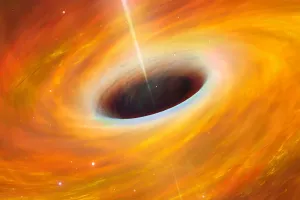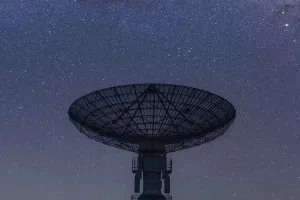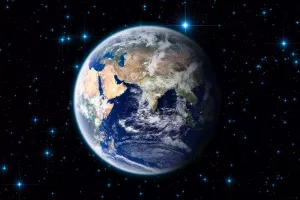In the solar system, there is such a planet. It's not very conspicuous, nor is it bulky enough. However, as the only satellite of the earth, the homeland of mankind, it has always guarded the earth. It is our moon. Whenever the sky is clear at night, we look up and see a white planet. It's bigger than any other star in the sky, and that's the moon.
We can see the moon when we look up, and the moon is also the closest star to the earth. We can also clearly see the outline of the moon. The moon itself does not emit light because the moon is not a star. In the universe, only stars can emit light and heat by themselves, releasing a lot of energy, such as the sun. Because the strong chemical reaction of nuclear fusion is taking place in their bodies anytime, anywhere, and the moon does not at all. The light emitted by the moon is actually reflected sunlight, which is why its light is so faint.
As early as 4.5 billion years ago, a star collided with the earth, and the fragments produced by the collision and combination were attracted by the earth's gravity, so the moon was born. For example, the inclination angle of the moon and the earth is the same, and many components of the moon are found on the earth. There are many similarities between the two, and the facts have fully verified this.
The impact caused the largest catastrophic disaster in Earth's history. But the planet Teia also brought Earth full of the carbon, nitrogen and sulfur needed for life. Without this impact, there may not have been ancient creatures and the later humans on Earth, including other life, may not have existed.
Because of this impact, the planet Teia was completely shattered and disappeared, and the earth became much "softer" than before. The speed of rotation has changed from 10 hours a day before to 24 hours a day now. As time flies, the moon created by the collision of Teia with the earth has become more and more "mature and stable", and has become the earth's umbrella with Jupiter, another planet in the solar system. It and Jupiter have helped Earth intercept numerous asteroid and comet impacts throughout the solar system.
The beauty of the moon can be observed with the naked eye on the earth, but once you use an astronomical telescope to spy on it, you will find that the whole picture of the moon is ugly. The surface of the moon is full of craters, which are all cosmic debris hitting the moon. The crater formed is also evidence that the moon protects the Earth from asteroid impacts.
Studies have shown that the moon is gradually moving away from the earth, which is an important reason why many people find that the moon is not as big as before. Because the earth's revolution and rotation are faster than the moon's, the resulting gravitational collision causes the moon to be moving away from the earth. After data extrapolation, it was found that the moon is moving away from the earth at a rate of 3.8 centimeters per year.
In the future, the moon is likely to leave the earth. By then, humanity is likely to face a catastrophe. The tidal changes brought about by the gravity of the moon will disappear first, and the marine ecology will face destruction, and it is only a matter of time before the demise of marine life. Of course, that time is still a long way from now, at least a thousand years later, but we still have to plan ahead and think about future generations.


